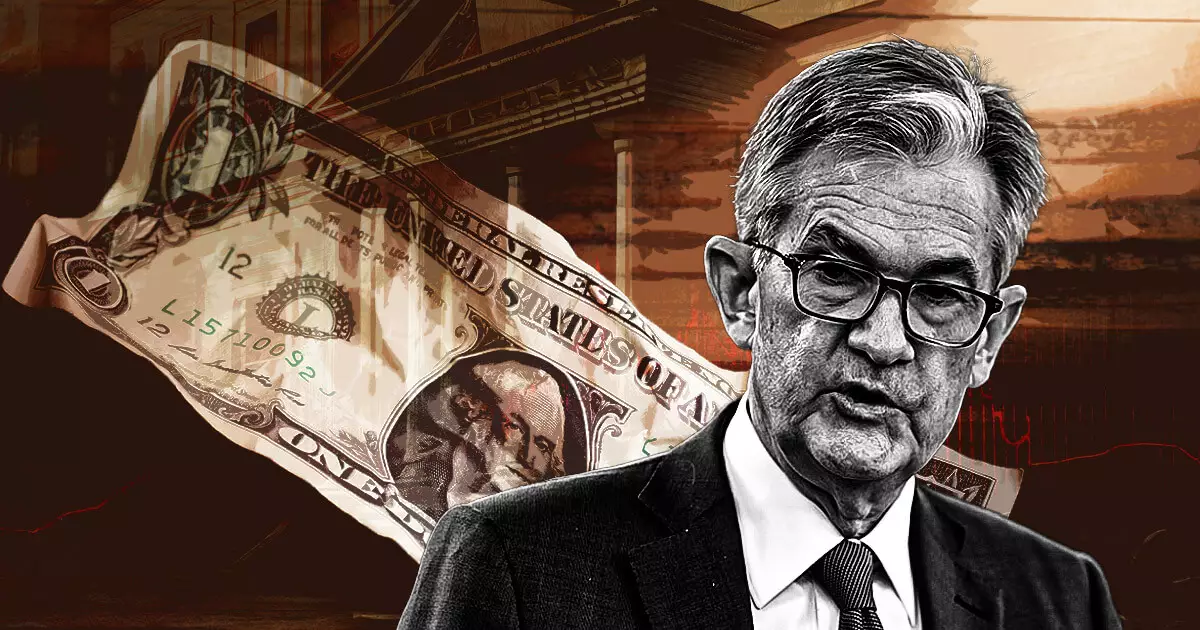Jerome Powell, the Chair of the Federal Reserve, has hit a pivotal note by reaffirming the necessity for a regulated framework around stablecoins. This statement comes against a backdrop of growing urgency as lawmakers grapple with the implications of digital currencies. Unlike earlier attempts at collaboration with Congress that flopped, Powell’s latest remarks suggest a shift in dynamics—a welcome sign that the Federal Reserve is no longer the cautious guardian watching from the sidelines. The “climate is changing,” as Powell noted, and for once, it feels as though lawmakers are poised to take meaningful action rather than just tiptoeing around the issue.
From my perspective, it’s about time. The regulatory landscape for stablecoins needs a sturdy structure that balances innovation and consumer protection. The consequences of neglecting this could be dire—both for the financial systems that underpin our economy and for the everyday consumers engaging in these digital transactions. As the adoption of stablecoins increases, with nearly $14 trillion in transfer volume last year, a frivolous or evasive approach could lead to chaos rather than progress.
The Banking Sector’s Hesitant Embrace of Crypto
One of Powell’s more refreshing remarks was his acknowledgment of the banking sector’s interactions with cryptocurrency. Historically, U.S. bank regulators—including the Fed—have adopted a conservative stance on digital assets. However, there is now an inclination to ease some of the stringent guidelines that have hampered financial institutions from diving deeper into crypto waters. Some may argue that this is a dangerous path—after all, a hasty embrace of innovation can lead to pitfalls. Yet, I argue that an intelligent and cautious easing is precisely what the landscape needs.
Banks are already engaging in crypto custody services under existing frameworks. Powell’s evident willingness to adapt regulatory measures could foster an ecosystem where innovation thrives while maintaining the financial system’s integrity. What remains crucial, though, is the commitment to rigorous oversight that keeps consumers safe. Without it, we could see a repeat of the messy financial collapses that plague histories—this time under the guise of technological advancement.
Legislation: The Necessity and Challenge of Formal Frameworks
The conversation around stablecoin legislation is increasingly urgent, underscored by Powell’s acceptance of Congressional interest in formalizing a comprehensive oversight structure. Yet, the task is cumbersome; multiple proposals, such as the GENIUS Act and the STABLE Act, have percolated through Congress yet remain unpassed. The challenges of aligning bipartisan interests with innovation are daunting. Without the political will, no amount of urging from the Federal Reserve will yield actionable regulations.
The innovation-versus-regulation dichotomy is not new but remains critical. The balance is precarious: too much regulation stifles innovation, while too little invites financial instability. Powell’s advocacy for a framework that prioritizes consumer protection, paired with the need to maintain financial soundness, brings a pragmatic approach to an often polarized discussion. This intersection of modern finance and regulation requires robust debate and decisive action—something that, admittedly, Congress has not consistently demonstrated.
Global Financial Markets and the Essential Role of Stablecoins
A pivotal point raised by Powell is the role of stablecoins in global finance, which further supports the necessity for regulation. As stablecoins increasingly weave into the fabric of international financial markets, this not only affects U.S. consumers but also influences global economic stability. The apparent lack of a federal regulatory regime governing stablecoins could mean that reckless innovation happens unchecked, leading to potential risks that spillover beyond U.S. borders.
Those who advocate for an unregulated environment argue that innovation should take precedence, but that is a flimsy viewpoint when weighed against the risks of systemic failures. Coordination on a global scale is essential if stablecoins are to be anchored as trusted instruments in financial systems. Therefore, Powell’s insight into regulating while promoting innovation could be seen as a rallying cry for a more strategic approach to digital currencies in the international arena.
Powell’s stance offers a glimmer of hope amidst the often chaotic and uncertain world of cryptocurrency and stablecoins. His willingness to adapt regulatory practices could very well shape the future of digital finance, provided that the U.S. can navigate this transition with prudence and foresight.
















Leave a Reply